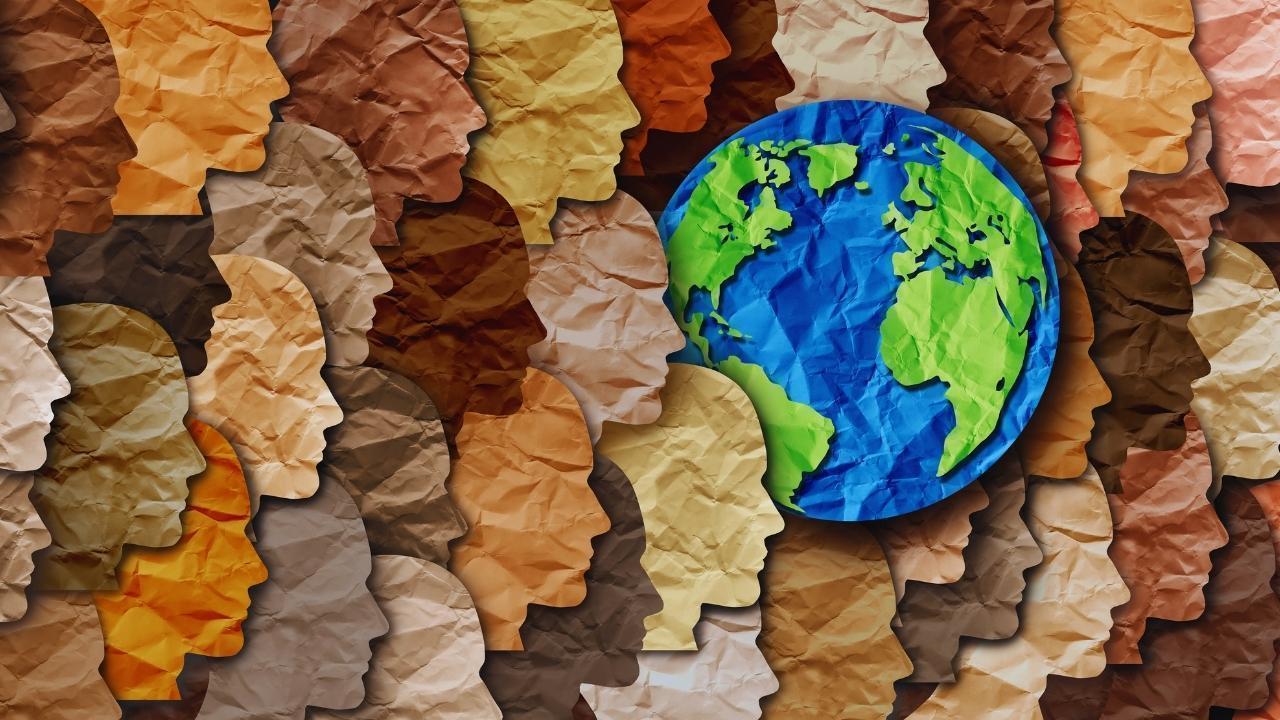You have not yet added any article to your bookmarks!

Join 10k+ people to get notified about new posts, news and tips.
Do not worry we don't spam!

Post by : Anis Farhan
Asia is home to some of the most biologically diverse ecosystems on the planet—tropical rainforests, coral reefs, mangroves, high-altitude flora, and endemic wildlife. Yet these ecosystems face intense pressure: deforestation, habitat fragmentation, pollution, climate change, poaching, and invasive species are all contributing to rapid biodiversity loss. Traditional monitoring methods—manual surveys, periodic sampling, ranger patrols—are valuable, but they are often slow, labor-intensive, and difficult to scale across remote or rugged terrains.
Artificial intelligence (AI) is emerging as a powerful ally in the race to protect Asia’s biodiversity. By combining sensors, remote sensing imagery, audio monitoring, drone data, and machine learning models, researchers and conservationists are detecting threats earlier, mapping species more comprehensively, and making more informed conservation decisions. This article delves into how AI is being applied in environmental monitoring across Asia, the successes, limitations, and what needs to happen to maximize its potential for saving biodiversity.
AI tools work in diverse ways that accelerate and improve ecological monitoring:
Remote Sensing and Satellite Imagery: AI processes images from satellites or drones to detect changes in forest cover, mangrove boundaries, land use patterns, or the spread of invasive species. These signals can reveal habitat loss long before ground surveys detect them.
Acoustic Monitoring (Ecoacoustics): Sensors placed in forests, wetlands, or urban edges record audio continuously. AI algorithms can sift through hours of recordings to identify species by their calls (birds, amphibians, insects) or detect human disturbances like gunshots or illegal logging. This enables near real-time alerts.
Image Recognition via Camera Traps: Camera traps set in the wild capture photos of passing animals. Deep learning models can classify species, count individuals, and even identify rare or endangered species without human experts reviewing every image.
Citizen Science and Mobile Apps: Local communities or nature enthusiasts can collect data via smartphones—photos or audio—that feed into AI systems which verify and classify the data, increasing geographic coverage and species databases.
Predictive Modeling: Using historical data, AI can forecast where habitat loss is likely, where poaching might increase, or where climate change impacts will be most severe. This helps prioritize conservation efforts.
Here are several concrete examples where AI is being used in Asia for environmental monitoring and biodiversity conservation:
Acoustic Monitoring in Borneo’s Forests
In Sabah (Malaysian Borneo), researchers have deployed audio recording devices across degraded and intact forests. The recordings are fed into platforms like Arbimon that use AI to identify animal and bird calls. This helps measure species activity and biodiversity, compare intact versus disturbed habitats, and monitor how restoration efforts are working. CNA
Species Identification of Aquatic Invertebrates in Vietnam
A project in Vietnam has developed an AI-powered dataset and model for aquatic invertebrate species classification. This helps detect water quality issues, because these small organisms are strong indicators of aquatic ecosystem health. Using semi-supervised learning, the model reduces manual effort in annotation and classification. arXiv
Wood Species Identification for Forest Monitoring
Another Vietnamese study uses deep learning models to classify timber species from images. Accurate timber species identification helps detect illegal logging, manages forest inventory, and ensures sustainable forestry practices. Lightweight models like MobileNet and similar architectures made it possible to perform identification on devices with limited resources. arXiv
Coastal Ecosystem Monitoring and Aquaculture’s Impact
In coastal Asia, AI has been applied to satellite data to map and monitor aquaculture ponds and their encroachment into mangrove forests. Machine learning models detect spatiotemporal changes, assess mangrove loss, and help identify restoration priority areas. These efforts support coastal ecosystem resilience against sea-level rise and pollution. MDPI
Forest Change, Predation, and Wildlife Crimes
Tools like trail cameras with AI for species detection, and acoustic sensors for illegal sound detection, are being used in various reserves in India to detect poaching or unusual wildlife patterns. AI helps reduce delays between detection and response, which is critical when species are threatened. theaisanctuary.org+1
Wetland Water Quality Monitoring via Satellite Imagery
In India’s wetlands, researchers have developed AI-based applications to monitor water quality—turbidity, chlorophyll content, moisture in vegetation—using satellite imagery combined with cloud computing. These tools provide near real-time data, enabling faster response to pollution and algal blooms and assisting authorities and communities in preserving wetland ecosystems. The Times of India
The adoption of AI offers multiple benefits that traditional conservation methods struggle to deliver:
Scalability: Once set up, AI systems can cover large areas continuously, including remote regions that are difficult for humans to monitor regularly.
Speed and Timeliness: Quick identification of changes or threats means conservationists can act sooner—whether that’s detecting illegal logging, pollution, or invasive species encroachment.
Cost-Effectiveness: While initial setup may be costly, over time AI-based systems reduce ongoing labor costs and increase data throughput per unit cost.
Detection of Hidden or Rare Signals: Many species are cryptic or active at night or in dense forest; audio or camera detections aided by AI can pick up signals invisible or unheard to human observers.
Data-Driven Policy and Prioritization: With richer, real-time data, governments and conservation NGOs can allocate resources more effectively, prioritize areas under greatest threat, and monitor the effectiveness of interventions.
Despite its promise, AI-based environmental monitoring faces several challenges that must be addressed for it to fully deliver on its potential:
Data Quality and Biases: Training AI models requires high-quality labeled data; in many parts of Asia, data are scarce or biased toward well-known species and accessible areas. Rare species or remote ecosystems often get less representation.
Technical Infrastructure and Connectivity: Remote forests, wetlands, or mountainous regions often lack reliable power, internet connectivity, or devices, making real-time monitoring difficult or costly.
Interpretability and False Positives: AI algorithms can misclassify sounds or images under unusual conditions (noise, weather, rare species), leading to false alerts that waste resources. Ensuring models are well-validated is essential.
Regulatory and Data Sovereignty Issues: Many governments are concerned about data collected in protected areas, its storage, and its use—especially if processed outside the country. Legal frameworks for data protection, environmental surveillance, and privacy often lag behind technological capability.
Cost and Maintenance: Deploying sensors, drones, or satellite monitoring systems involves upfront and ongoing costs; ensuring maintenance, calibration, and updates can strain budgets, especially for NGOs or smaller governmental agencies.
Ethical Concerns and Community Engagement: AI monitoring must be aligned with community rights, involve local stakeholders, and ensure that benefits don’t bypass or harm local residents. Otherwise, there may be resistance or misuse.
To make AI effective in conserving Asia’s biodiversity, several conditions are essential:
Robust Training Datasets: Collections of images, audio, species information should be expanded, especially for lesser-known species and remote ecosystems.
Local Capacity Building: Training local communities, rangers, scientists in deploying, maintaining, and interpreting AI tools ensures sustainable adoption.
Hybrid Models: Combining AI tools with human expertise yields better results. Local ecological knowledge helps validate AI outputs, reduce errors, and build trust.
Legal and Policy Support: Policies that permit data collection, remote monitoring, and sharing across borders while protecting privacy and environment are needed. National biodiversity action plans should integrate AI tools formally.
Cross-sector Collaboration: Partnerships between governments, academia, NGOs, private tech companies, and communities help share resources, data, and innovations.
Scalable and Affordable Solutions: Lightweight algorithms that run on edge devices or low-power sensors are more suitable for areas with limited infrastructure.
Some trends and new directions show promise for the near future:
TinyML and Edge Computing: AI models small enough to run locally on low-power devices (e.g. sensors, audio recorders) reduce the need for constant connectivity and enable near real-time detection in remote areas. arXiv
Semi-supervised and Transfer Learning: Techniques that allow models trained in one region or species group to adapt to others with minimal new data—helpful where collecting labeled data is expensive.
Multimodal Monitoring: Combining image, audio, satellite, environmental sensor data to get a richer picture of ecosystem health rather than relying on a single type of data.
Real-time Alert Systems: Systems that send alerts for anomalous events (sudden forest loss, pollution spikes, presence of invasive species) to rangers or authorities for immediate action.
Community Science Platforms: Enabling citizens to contribute data via mobile apps, community sensors, and cameras; AI helps verify data quality, classify observations, and integrates locals into conservation efforts.
To illustrate impact, here are a few highlights of projects making measurable differences:
An AI-based app in India monitoring wetland health now allows quicker detection of algal bloom and turbidity changes than manual sampling, helping conservation groups respond earlier and prevent ecosystem damage. The Times of India
Studies of timber species identification in Vietnam demonstrate that AI models can identify threatened wood types with very high accuracy, which aids in managing forests and enforcing bans on illegal logging. arXiv
Audio monitoring in Borneo has enabled rapid assessment of biodiversity in restoration sites versus degraded forests. This helps researchers understand which restoration methods work, track species recovery, and measure success of protected area efforts. CNA
Asia faces a convergence of high biodiversity and high environmental threat. Rapid urbanization, agricultural expansion, deforestation, and climate impacts are accelerating ecosystem decline. Traditional monitoring is no longer sufficient to keep pace with changes. AI tools are needed because:
They can detect change far faster than periodic field surveys, enabling intervention before irreparable damage.
They bring cost savings when scaled, freeing limited conservation budgets to cover more ground or more species.
They offer ways to monitor remote, inaccessible areas that are rich in biodiversity but typically under-sampled.
They support global conservation goals, such as those under the Convention on Biological Diversity, by providing quantifiable metrics.
Several obstacles still slow AI’s full adoption in environmental monitoring in Asia. But there are ways forward:
Funding Gaps: Conservation projects often depend on donations or grants. Governments and international bodies must provide sustained funding focused on technology integration.
Skilled Personnel Shortage: Training ecologists in AI / data science or bringing technical experts into ecological projects is not always easy. Partnerships with universities, tech incubators, or NGOs can help.
Uneven Access to Technology: Remote regions may lack sensors, good internet, or satellite coverage. Deploying edge devices, offline-capable tools, or low-bandwidth solutions can mitigate this.
Regulation & Ethics Lagging: Governments must update laws around environmental data, privacy, and use of AI. Ethical frameworks to ensure data is used fairly, does not violate indigenous rights, or enable surveillance misuse are needed.
Maintaining Hardware: Devices like sensors, camera traps, or drones require durable design, energy sources (solar or battery), and maintenance. Local supply chains and support are important.
To ensure AI becomes a standard and effective tool for environmental monitoring in Asia, the next few years should see:
Scaling Proven Tools: Expanding successful pilot projects to larger regions, more countries, or multiple ecosystems.
Standardization of Data & Models: Shared protocols, open datasets, and interoperable models will allow cross-border cooperation and benchmarking.
Policy Integration: Governments should embed AI monitoring in legislation and regulatory frameworks—e.g., require real-time forest loss alerts, water quality indices, species detection for environmental impact assessments.
Community Ownership: Involving local and indigenous communities as partners—not just as beneficiaries—will ensure solutions are culturally appropriate and sustainable.
Innovations in Low-Cost Hardware: More affordable sensors, solar-powered devices, and edge deployment will make monitoring accessible even in marginalized or remote areas.
Ethical AI Use: Transparency, fairness, data privacy, and avoiding unintended negative consequences must guide deployment.
Artificial intelligence is not a magic bullet, but it is one of our most potent tools in the fight to save Asia’s biodiversity. When applied thoughtfully, combining remote sensing, ecoacoustics, image recognition, and predictive modeling, AI can help us see, understand, and protect ecosystems at scales that were previously impossible.
Asian conservationists, researchers, governments, and communities are already using AI to detect habitat loss, monitor threatened species, assess water health, and respond more rapidly to environmental threats. The success of these early examples shows what is possible when technology meets ecological need.
As Asia faces growing pressures from development and climate change, investing in AI-based monitoring, removing barriers to adoption, and ensuring ethical, inclusive deployment is more urgent than ever. The future of many species—and of ecosystems that millions depend on—may hinge on whether we seize this opportunity now.
This article is written for informational and educational purposes. The examples and case studies are based on available research and reported projects as of late 2025. Some data may change as technology and project outcomes evolve. This article does not constitute environmental or legal advice.










Thailand Defence Minister Joins Talks to End Deadly Border Clash
Thailand’s defence chief will join talks with Cambodia as border clashes stretch into a third week,

India Raises Alarm Over Fresh Attacks on Hindus in Bangladesh
India has condemned recent killings of Hindu men in Bangladesh, calling repeated attacks on minoriti

Sidharth Malhotra & Kiara Advani Celebrate Baby Saraayah’s 1st Christmas
Sidharth and Kiara share adorable moments of baby Saraayah’s first Christmas with festive décor and

South Korea Seeks 10-Year Jail Term for Former President Yoon Suk Yeol
South Korea’s special prosecutor demands 10 years for ex-President Yoon Suk Yeol on charges includin

Salman Khan’s Exclusive 60th Birthday Bash at Panvel Farmhouse
Salman Khan to celebrate his 60th birthday privately at Panvel farmhouse with family, friends, and a

Dhurandhar Breaks Records with Rs 1006 Cr, Becomes Bollywood’s Biggest Hit
Dhurandhar rakes in over Rs 1006 crore worldwide in 21 days, becoming Bollywood’s highest-grossing f